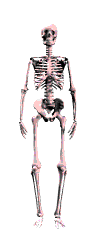Standing feet shoulder width apart, arms at side. The standard rules apply.
- Exhale interlace finger in front of groin, arms straight.
- Inhale palms up to chest.
- Exhale palms push straight out in front.
- Inhale palms pull into chest.
- Exhale push palms to ground, bending forward.
- Inhale pull palms up to chest and continue pushing palms to the sky, up on toes as appropriate.
- Release fingers separating arms and exhale arms down to the sides.
- Stand for a moment.
Repeat the cycle several times, each step once per cycle. Useful as a quick warm-up when you need to get the Qi flowing but not necessarily going to meditate. Commonly used as a prequel when doing Eight Internal Iron Palm exercise.



